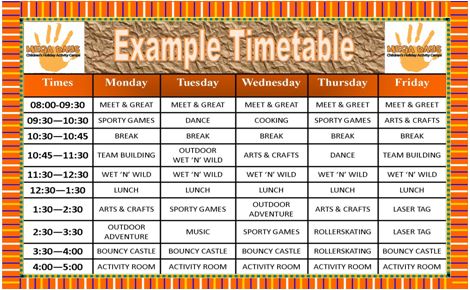Reports suggest that children with ADHD display higher levels of inattention, hyperactivity and impulsivity in less structured activities (Verret., C et al., 2010). Therefore a structured activity program may help to improve their muscular capacities, motor skills, behavior assessments, and the ability to process information.
Structured Activity is:
- Planned and directed
- Designed for child’s developmental level
- Organized activity with an instructional purpose
These structures may include the use of a regular timetable, the presentation of new material in a step-by-step manner and the provision of short, clear instructions. Failure to implement a daily structure for children with ADHD may contribute to increased levels of disruptive behavior.
Tips To Choose Activities
Being Hands-On
Activities that are hands-on will hold the attention of a kid with ADHD longer, and will help him learn about his environment without worrying about what might get broken.
- Gardening is a simple at-home activity that allows a kid with ADHD to work with his hands.
- Discovery museum, which often has exhibits that encourage child participation and hands-on exploration. Choose one that has hands-on exhibits and things they can touch, rather than things to look at.
Individualized Attention
- One-on-one basis, rather than with all of the distractions that come with a group environment.
- Individualized interactions allow the teacher or coach to create a program that suits the child’s temperament and needs. Example; swimming or tennis
Therapeutic Relationship
- Essential for helping to effect awareness and change. It helps the child to feel safe and to trust their play can be genuine.
- A sense of humor and an attitude of caring and warmth can create an atmosphere in which the child becomes willing to accept direction and be willing to work on the therapeutic goals.
DO’S
- Understand the Child’s Learning Style:
- Use shorter, smaller chunked time frames for most activities.
- Communication about expectations in a firm, fair and positive manner
- Attention and Impulse Control:
- Always make sure you have his/her full attention before talking and always establish eye contact. Use cues that work (signal, hand touch etc.). Reward good things! Catch them doing something well and catch them frequently.
- Monitor Closely:
- During times of transition or times when activities are somewhat unstructured, be sure to keep a watchful eye. Prepare the child for transitions. Provide immediate and on going feedback.
- Behavior Modification:
- Decide on the specific behavior to change – one at a time, for example: disorganized, impulsive, very active, weak memory, inability to focus, easily distracted, etc.
DON’TS
- Limit television and video games to a half-hour per day. It may be better to limit the number of friends ADHD child has over to play to one or two at a time.
- ADHD children usually do not do well at grocery stores, malls, and other shopping centers. They can get over-stimulated by all the noise, people and stuff.
- Games with long waiting periods. Avoid ADHD activities that involve long periods of inactivity, or a long sequence of steps to complete. Children with ADHD just don’t have the patience.
- Do not yell, be kind, firm and patient.
Structured Activities That Can Be Choosed:
|
|
|
|
|
Sample Of Structured Activities For ADHD
 |
Conclusion
Remember that a consistent structured activity plan brings the most success, work with parents/ carer, teacher and an Occupational Therapist to ensure that home, school and rehabilitation program have similar routines and expectations.
References
1. http://www.hadd.ie/article/teaching-and-managing-children-adhd#sthash.qWuPi0HE.dpuf
2. http://www.sparkpe.org/blog/structured-activity-unstructured-activity/#sthash.pLgFdnBx.dpuf
3. Verret., C et al., (2010), A Physical Activity Program Improves Behavior and Cognitive Functions in Children With ADHD, An Exploratory Study, Journal of Attention Disorders 2012 16: 71. DOI:10.1177/1087054710379735
4. Photos taken from “images for structured activities for ADHD.
| Last Review | : | 28 August 2020 |
| Writer | : | Nora bt. Hamid |
| Accreditor | : | Premalatha a/p Sundram |
| Reviewer | : | Tan Foo Lan |







